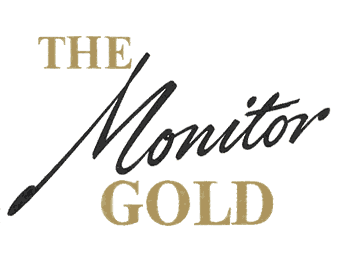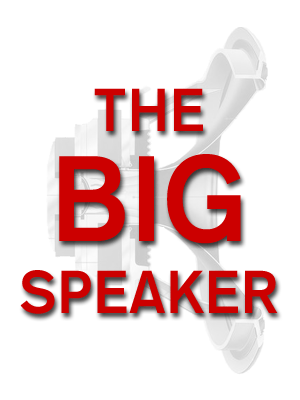

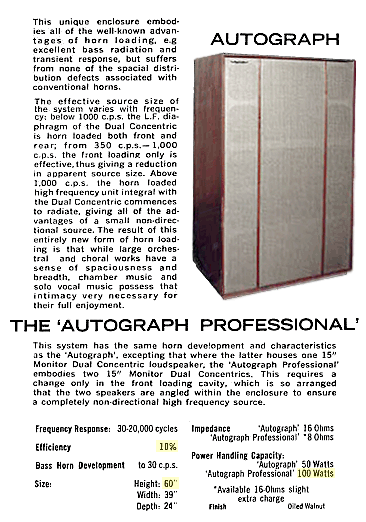
|

|
|
A Boyhood Riddle Is Solved!
I love when the Internet answers the great questions. One of my all-timers, which nagged me since my early teens, was always, "What was that BIG speaker in Henry Radio's Hi-Fi department?" Well, the net came through again, folks. It's a Tannoy Autograph Professional, that's what. With this knowledge, I am now more complete, even though my audio setup probably won't be until it has a pair of these monsters, fed by some nice clean valve watts. At that time, Henry Radio was the great old-fashioned type of boat anchor store for hams that you don't see any more. It was about 20 feet from the 405 Freeway, on Olympic Boulevard in West L.A.. In front were several VERY well-worn showrooms where splintery wooden shelves groaned under awe-inspiring stacks of used tube radios, any one of which would fetch way more bucks today on eBay than it ever did then. There were hundreds of these. Transmitters just sat there and looked cool, like real communications equipment. Receivers were usually hooked up and ready to try out. Beginning hams got a real education in what had gone before the Drakes, KWM's, and early Yaesu riceboxes of our own time.
Right by the front door stood a Coke machine and a Collins KW-1. Both devices were approximately the same size and vintage. In the case of the Coke machine, you'd insert your money, turn a hand crank, and put your glass bottle back in the rack when it was empty. In the case of the KW-1, you would do nothing, because there wasn't enough money in the world to buy the thing. 
The audio room was a cramped little sanctuary behind a partially glazed door which did absolutely nothing to keep the sound out of the rest of the store, or the street for that matter. You could look in and see that day's TV producer or recording star auditioning the highest of the high end, including, of course, The Big Speaker. The salesman in the audio department, like all Henry employees, knew everything and took no prisoners. The same guy had been doing it forever. He was short, curly-haired, kind of portly, and very intelligent looking. He ran what was essentially the last of L.A.'s old-school, divorce-the-wife-if-she-says-it's-too-big, in-your-face, hi-fi departments. Not a stereo store. A hi-fi department. When he demonstrated speakers, you'd know pretty fast if The Big Speaker was under consideration. There'd be a full orchestra going, pretty much at concert volume, with a huge bass drum somewhere in the score. The Big Speaker, with its 100-watt power capacity and 10% efficiency, ate bass drums for lunch. These things cranked. Ka-WHOOOOOOOOOM, and you wondered if L.A. was having an earthquake. Once you heard The Big Speaker, you wanted two, but of course you'd have had better luck scoring the KW-1. You'd have also needed a smaller truck to get it home. Ahhh, materialism. Eventually Henry moved to a slick new building about half a mile west, and pretty much gave up on used boat anchors. It wasn't like hams couldn't score these at L.A.'s several great swap meets, and actually the new place remained a darn good radio store until giving up retail in the late 90s to concentrate on building its highly regarded line of RF amps. By then, nobody really remembered the funky original place, which Henry used as a factory for a time, before selling it to a furniture company. However, one did NOT forget The Big Speaker.
History of The Big Speaker The Big Speaker was made by Tannoy, a high-end British company which is still in business. The name came from material used in an early rectifier product in 1926 - "Tantalum-Lead Alloy." They supplied so much PA equipment that for a long time "Tannoy" was a generic word for the public address speakers in train stations, Army camps, and places like that. 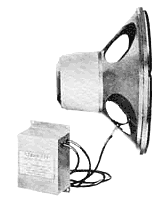
After Altec invented the Duplex 2-way, where a tweeter nests inside a woofer cone, Tannoy developed its own Dual Concentric line in 1947. Engineer Ronnie H. Rackham designed a unique setup in which the tweeter's horn development was continued by a specially shaped, and expensive, woofer cone. These came in colors. First was the Monitor Black with a 1 kHz chassis-mounted crossover. In 1953 came the Monitor Silver, with 25 watts power handling and an external crossover. Next came the Monitor Red in 1957, now 50 watts, and the Monitor Gold in 1967. Finally came 1974's HPD ("High Performance Dual"), with more modern materials. Unfortunately, one of these was the dreaded foam surround. This raw driver, with its almost fanatical craftsmanship, was and is a very cool looking speaker. Ultimately, it came in 10, 12, and 15-inch versions. All you see in the middle is an acoustically transparent dome where other manufacturers would have put a separate little exponential horn. 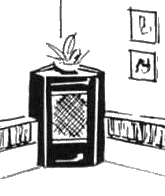
These speakers needed a lot of bass loading, and they really called for horns. That's what they got, thanks to Guy R. Fountain, whose "GRF" and "Autograph" corner horns remain legendary today. Unlike Tannoy's less highly regarded bass reflex home enclosures, these horns had that all-out, in-your-face, British engineering and styling, demanding acceptance on their own terms. They're pretty enough, in their nice walnut boxes with that really cool light-colored grill cloth they just don't make any more, but they're BIG boxes. The Autograph, at 4 feet 10 inches and filling two corners of the room, was not exactly for cramped apartments, even though ads invariably showed a nice flower pot on top. Like Altec's bigger enclosures, these used front-loading for the high end of the bass, and back-loading for the low. Unlike Altec, which stuck to variations on the bass-reflex corner enclosure, the rear used a complicated horn more resembling a Klipsch on steroids. Another British company, Wharfedale, used to advertise that it put sand in its enclosures. Well, so did Tannoy, to deaden out vibration in a few strategic places. Check the floor before you move these things upstairs! 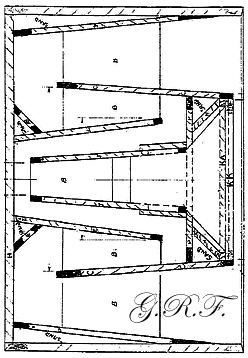
As Tannoy's 1967 ads proclaimed, the Monitor Gold was, "Designed with the transistor in mind." They meant it. The new Gold crossover was 8 ohms, and much more friendly to DC-coupled circuits. The beefed-up cone had a different resonance, requiring slightly changed enclosures for the ultimate performance. Perhaps as a consequence, the GRF and Autograph got new rectangular boxes, growing the Autograph to an even FIVE feet in height! This beast, with its single 15" Dual Concentric, was a wall-shaker, though some people think the highs got a bit tizzy when increased to match the knee-bending bass. The Autograph Professional added a second 15" Gold, in a slightly modified front horn, for the aforementioned 100 watts power capability. This is despite the fact that, at this efficiency, 10 nice clean British watts can blow you out of the room! And so The Big Speaker came to pass. The rest is history. Tannoy must actually have sold some of these monsters. I'm sure at least a few left Henry Radio, and apparently a lot more went east, as in WAY east. The Japanese, who know decent sound equipment when they hear it, loved them, and they still do. Google searches turn them up mostly at Asian used equipment dealers, where they fetch many many yen. And so we come to the end of our story. We finally have the scoop on The Big Speaker. Life is good. |
|
